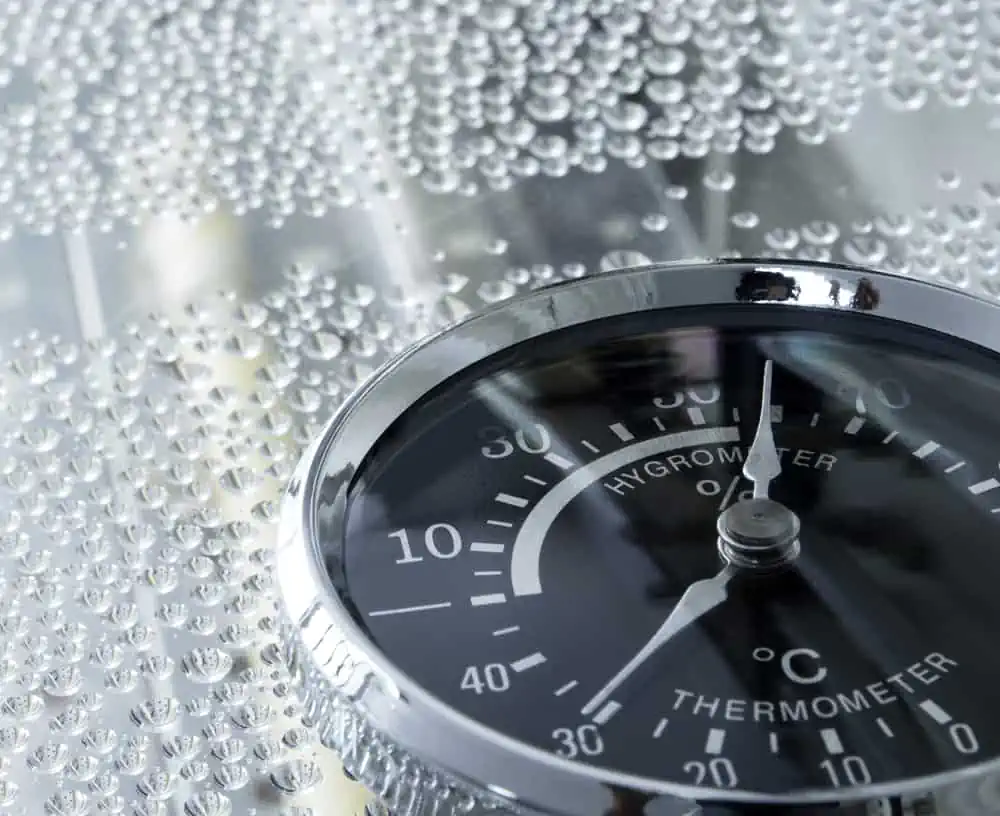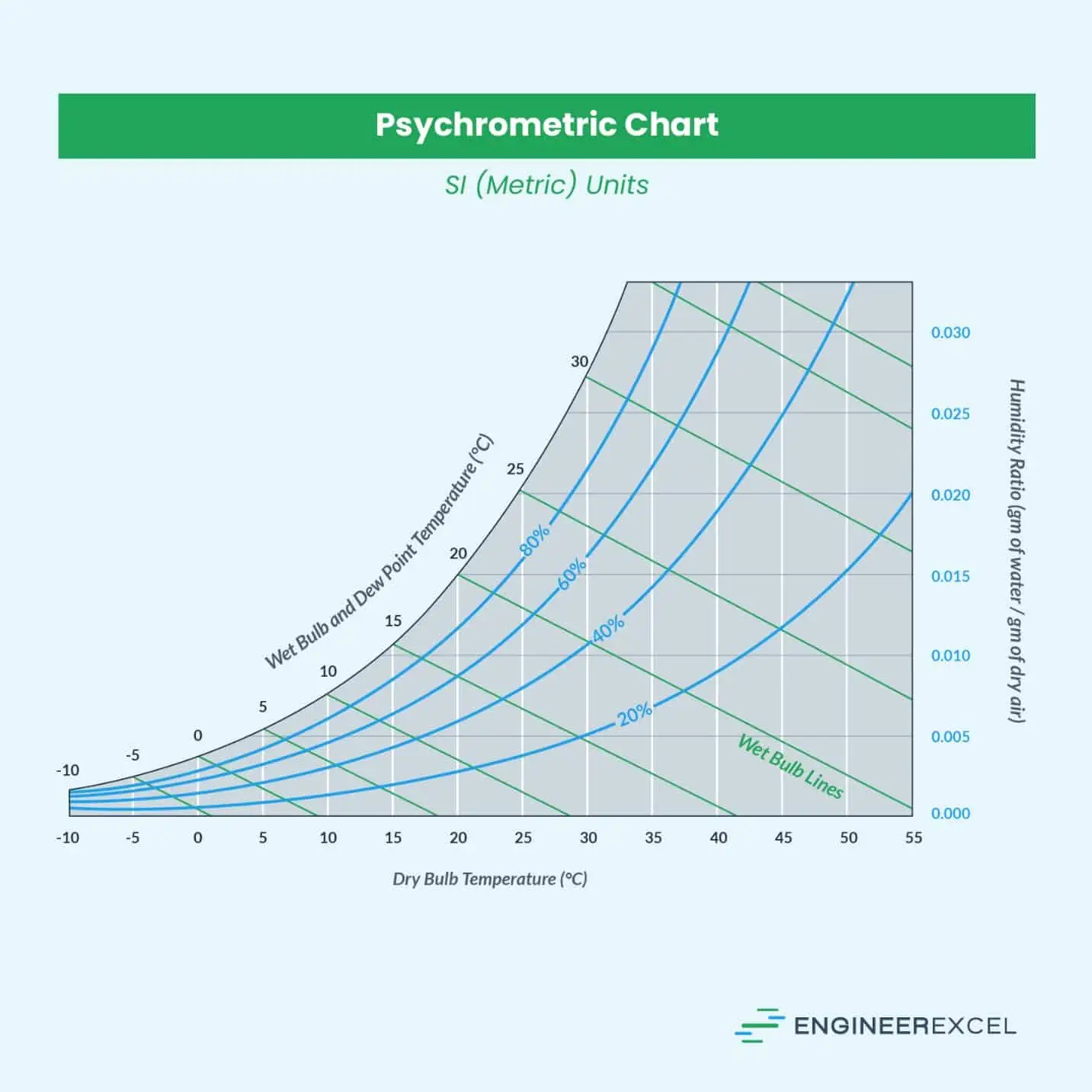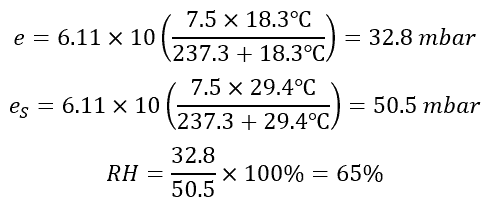The relative humidity is the ratio of how much water vapor is in the air to how much water vapor the air can hold. This value is in constant flux, and is dependent on a number of factors such as temperature and the dew point.

Relative Humidity Defined
The relative humidity is the ratio that is dependent on temperature. Because humidity is a measure of the amount of water vapor in the air, and warmer air can hold more water vapor without becoming saturated, areas with higher temperatures will have a different total humidity than areas with lower temperatures.
Relative humidity refers to how much water vapor is actually in the air in relation to how much vapor that same air could theoretically hold without becoming saturated. When the air becomes saturated, it can no longer hold water as vapor, and the water in the air begins to condense out, becoming a liquid.


Elevate Your Engineering With Excel
Advance in Excel with engineering-focused training that equips you with the skills to streamline projects and accelerate your career.
The relative humidity is inversely proportional to the theoretical humidity. Therefore, warmer air will have a lower relative humidity, and be drier. This is because the warmer air has a higher theoretical total humidity, so the ratio of the actual humidity to the theoretical will be lower, even if there is the same amount of water vapor in the air.
The Importance Of Relative Humidity
In engineering, understanding the environment to which a structure will be exposed is often key. Relative humidity plays a role in defining an environment, and areas with higher relative humidity will have different requirements than those with lower relative humidity. Things like structural degradation due to exposure to high levels of water in the form of vapor need to be considered, so knowing the expected humidity levels for a region is necessary.

Finding The Relative Humidity
To calculate the relative humidity, there are two factors that are needed: the dry bulb temperature TD, which is the temperature measured by a thermometer exposed to dry air, and the wet bulb temperature TW, which is the temperature measured by a thermometer whose bulb is covered by wet cloth and exposed to air. This temperature is the dew point, which is the temperature at which water vapor begins to condense.
A tool for accurately measuring the two temperatures is a sling psychrometer. This tool allows the user to find both the dry temperature and dew point temperature at the same location and the same time. A sling psychrometer is operated by wetting the bulb of one thermometer, which is then spun through the air to measure the wet temperature. Meanwhile, a second thermometer attached to the first remains stationary to measure the dry temperature. These two temperatures, which are recorded simultaneously and under the same atmospheric conditions, are used to accurately determine the relative humidity as follows.
Using A Psychrometric Chart
Using the two temperatures and a psychrometric chart, the relative humidity can be found. Example psychrometric charts are shown in the following figures:

CLICK HERE to download a psychrometric chart in US Units.

CLICK HERE to download a psychrometric chart in SI Units
Calculating The Relative Humidity From Temperature
To calculate the relative humidity RH, the following equations are used:



where:
- e is the actual vapor pressure, with SI units of mbar
- Td is the dew point temperature, with SI units of °C
- eS is the saturated vapor pressure, with SI units of mbar
- T is the actual temperature, with SI units of °C
Example Calculation
To demonstrate the calculation of the relative humidity, take an actual temperature of 29.4°C and a dew point temperature of 18.3°C. Then, using the equations:

Calculating Relative Humidity From Specific Humidity
The specific humidity is the mass of water vapor per unit of air. If the specific humidity is known, the relative humidity can be calculated as follows:

where:
- SH is the specific humidity, which is a dimensionless parameter
- SP is the saturation point, which has units of % and refers to the amount of water vapor the air can hold
Applications Of The Relative Humidity
Since the relative humidity expresses the amount of water vapor in the air as a function of temperature, it can play a key role in understanding whether a structure will be subject to condensation. Different materials will respond differently to varying levels of relative humidity.
For example, steel girders exposed to high relative humidity and low temperatures are at risk of corrosion due to water condensing and causing rust. Therefore, treating these girders for corrosion resistance is appropriate. However, if water condensation is not expected to be an issue, such as in areas with low relative humidity and warmer temperatures, the cost of treating the girders can be reduced or eliminated.
Understanding when and how relative humidity will be a factor in an environment can help address issues, including material selection and cost constraints, before the effect of the humidity becomes a problem for an engineered structure.
